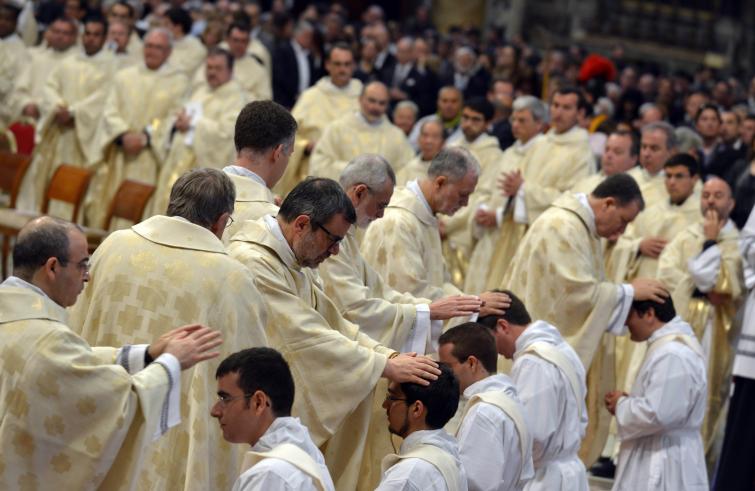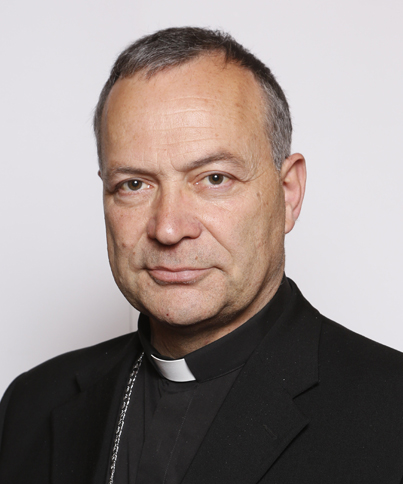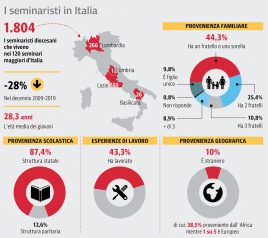
“Communion and mission constitute the fundamental horizon of formation, which does not end with the seminary period. It is a lifelong formation: the candidate for the priesthood is a disciple of Christ the moment he says ‘yes’ to the Lord, and remains so forever.” Msgr. Stefano Manetti, Bishop of Fiesole, President of the Bishops’ Commission for the Clergy and the Consecrated Life, comments on the “Ratio formationis sacerdotalis for seminaries in Italy” reviewed and approved by the 78th Extraordinary General Assembly of the Italian Bishops’ Conference, which closes today in Assisi.

The formation of future priests was at the heart of the Assembly.
It was a moment of honest and open discussion. We are now waiting for the approval of the Dicastery for the Clergy. The Ratio is the fruit of a broad consultation, involving formators, seminarians and bishops. In essence, it consists of two fundamental stages. The first is spiritual, human and community formation, centred on self-knowledge. This phase covers the first three years.
Today, a thorough and serious formation is necessary in order to build a solid spiritual life and to begin to enjoy fraternal life in the seminary community.
And what about the second stage?
It involves a year of pastoral, charitable or missionary experience outside the seminary. The formators will propose it when it is appropriate, and in any case after the candidates have been admitted to the Order. It can be described as a form of initiation into the People of God. It is a gradual introduction into the reality of the Church, with the main purpose of getting to know, love, serve and walk with the People of God. There will be a circular relationship between pastoral practice, interior and personal life, theological study, liturgical and community life.
Is community life an important element in priests’ personal growth?
We plan to give a lot of space to community life, according to the creativity of the formators. The accompaniment will be gradual and increasingly intense, so that leaving the seminary will not be seen as a leap into the unknown. Rather, the new priest will have already gained some experience and affection for the Christian community. While the first stage of formation takes place within the seminary, the second stage involves the whole Christian community in the formation process. This responds to a request coming from the Synodal Way: to involve the Christian community in priestly formation.
What do today’s seminarians have in common?
They all need an inner formation; they need to challenge the highly individualistic attitude that so strongly characterises society in which we live. They are young men thirsting for fatherhood and finding it – often for the first time – in the educational relationship offered in the seminary. They are young men who appreciate life and, when they discover it, appreciate community life even more. But they must be accompanied. The core of the Ratio is to give centre stage to the human person with his history, his temperament and his pace. Also for this we speak of customised accompaniment, which transcends certain automatisms. Progress is made according to the stages reached by the candidate, the formation is for the person as a whole with his human, spiritual, theological and pastoral dimension.

Are there concerns about the numbers of vocations to the priesthood?
It is a challenge we are confronted with and, if embraced, it will make us grow. It compels us to raise the quality of our proclamation and proposal. We must focus on quality. If we stop at quantity, we miss the boat. We must focus on high-quality formation, a high-quality evangelisation.
We must have the courage to truly proclaim the Gospel, because young people are asking us to do so.
Accepting this reality is the necessary condition for an authentic path of formation. Without an encounter with Christ, which entails true conversion, if the young person is not reached by the Word of God, we will be defeated. There must always be room for the Word, the Church is called to accompany the work of God. It is not we who create vocations. The first verification of discernment is to ensure that there is a true calling from the Lord.
Who will be the priest of the Italian Church?
He will be a man of relationships, close to all those whom the Lord has entrusted to his care, who knows how to walk with the People of God, faithful to his responsibilities as a guide, a point of reference, a presider of the Eucharist and of proclamation, but able to avoid all forms of clericalism. When the seminarian comes before the bishop for ordination, the challenge is to present himself in faith, aware of his limitations but confident that he is loved by God and the Church.
Without the anxiety that he expected to be perfect?
Perfection is not a requirement for the ordination of a seminarian. What is required is that he should have allowed himself to grow in the ecclesial community, in God and in the Church. He must also be a missionary priest.
Communion and mission are the fundamental horizons of formation,
which does not end with the seminary. It is a lifelong formation: the candidate for the priesthood is a disciple of Christ from the moment he says “yes” to the Lord and remains so forever. He begins a journey of formation that never ends. Initial and lifelong formation are one and the same. The challenge before us is to give continuity to this journey.












